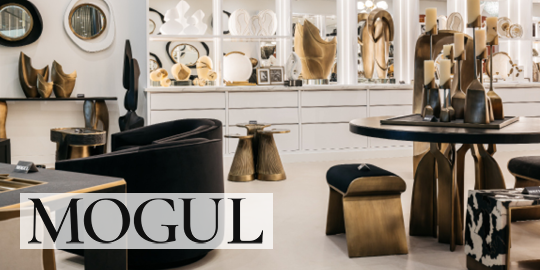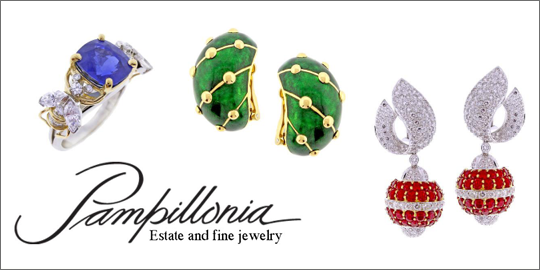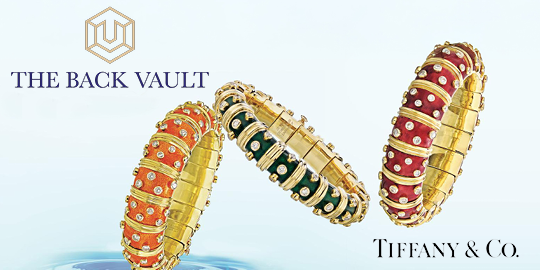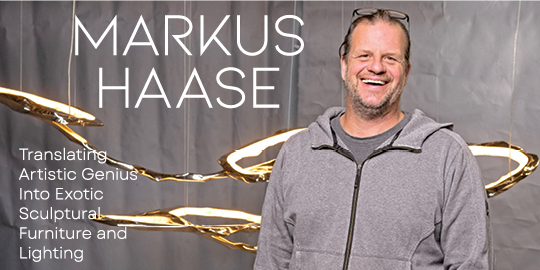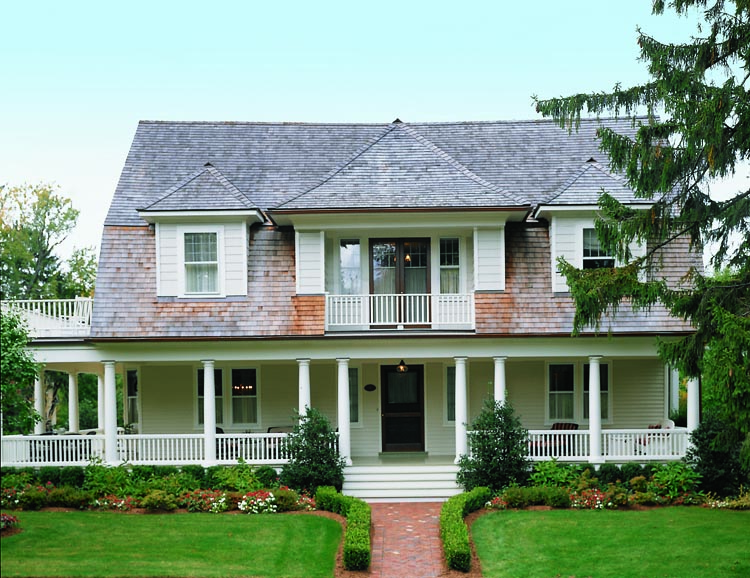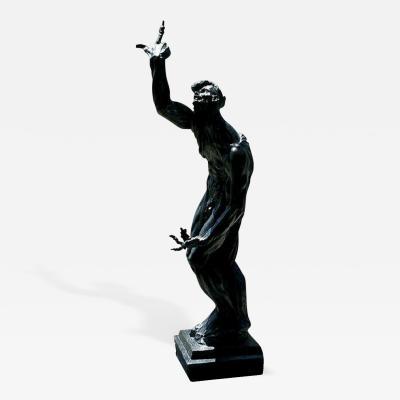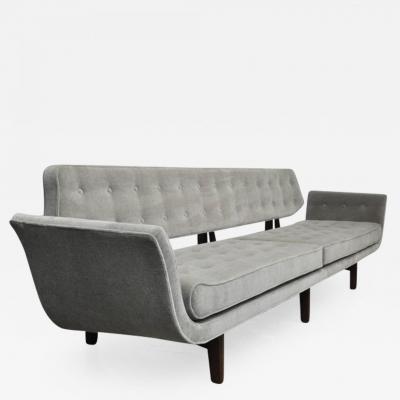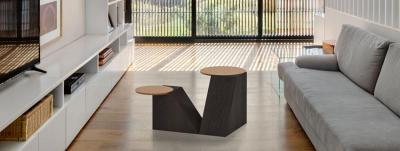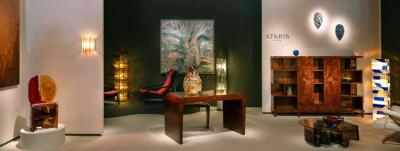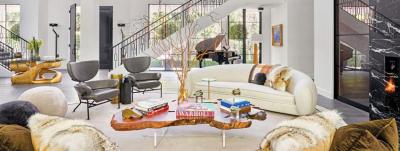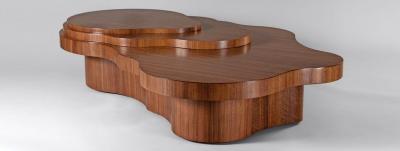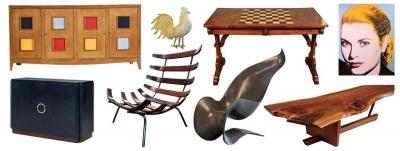Living with Comfort and Design
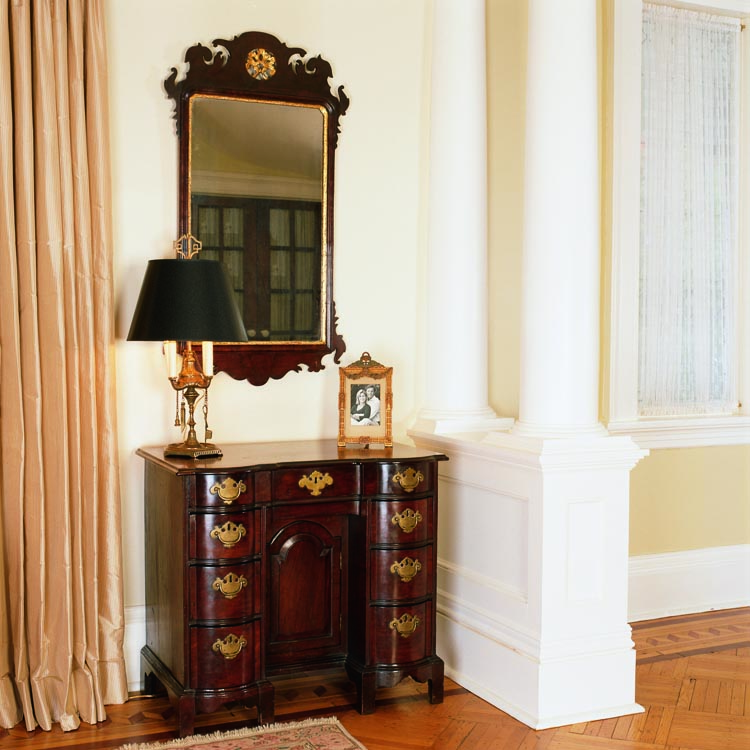
- If I had to select a favorite piece,” says Kim, “it would be this Chippendale kneehole bureau, circa 1760. It is all about proportion and surface.” Block-fronted kneehole bureaus, with their interplay of convex and concave contours, were a hallmark of Boston, Mass., craftsmanship and among the most fashionable of early American furniture forms. The Chippendale looking glass with gilded shell creates an elaborate outline above the bureau.
Two years ago Kim Roy and her husband Chris Tofalli purchased a historic Westchester County house along the coast of Long Island Sound. They removed the mauve paint from virtually every wall and architectural element, tore out the shag carpeting that covered nearly all of the fourteen rooms, and built an addition. It was then that they could focus on restoring the house’s circa-1902 interior structure and decorating it with their collection of eighteenth- and early nineteenth-century American furniture. It was, in fact, their growing collection that prompted the couple to purchase the house.
“Our free time is precious so the focus of the house is on the joy of being with family and friends. The spaces are designed to be comfortable and warm, simple and clean,” says Kim. “I am not one for over-design. I like things to have a personal stamp, and mine is minimalism with versatility.”
Kim’s sense for what she likes in design has served her well during her twenty-year career in the fashion industry. Starting with brand development for AMC, she went on to become Group President at Liz Clairborne, Inc., then President of Ann Taylor stores. Kim is now President of Lauren, the women’s apparel line of Ralph Lauren. “I have always loved fashion,” she says. “As a child I knew I wanted to somehow work with beautiful things. By being in the fashion industry I could be involved and work with people from around the world. It is a particular honor to lead a brand for someone as visionary as Ralph. Ralph Lauren personifies American style.”
Kim keeps the business side of her life distinct from her home life. Her husband, Chris, who is a public relations consultant for a number of leading private equity firms, strives to do the same. “We have two different careers,” he says, “but we are both passionate about collecting early American furniture.”

- The centerpiece of the living room is the cherry wood high chest, ca. 1770, possibly from the Housatonic Valley, Conn. The wonderful proportions are complemented by carved fans and starbursts, fluted and chamfered case sides, an undulating skirt profile, and carved stocking feet with a ruffled collar above. Three Nantucket baskets, dating from the early nineteenth to early twentieth century, surmount the top. The graceful Queen Anne slipper-foot tea table, ca. 1740, a rare form, is attributed to the Goddard-Townsend School of Newport, R.I. An oil painting of the Jacob S. Winslow, by William P. Stubbs (1842–1909), Penobscot Bay, Maine, ca. 1890, hangs over the fireplace.
“I think what got us started,” Kim explains, “is our love of American history, particularly in relation to New England. I grew up in Massachusetts, where our country’s roots are, and it is an area known for its vitality, simplicity, and tradition. This is why we are primarily drawn to the furniture of this region.”
The couple has never collected with the goal of buying a particular object or form. Instead they are drawn to pieces based largely on emotional response—old surface, clean lines, and classic proportion are most important. The couple’s first purchase was a Rhode Island high chest, which is at their summer home on Nantucket. Most of the other pieces have a more relaxed aesthetic, such as the mermaid paintings by folk artist Ralph Cahoon (1910–1982).
The furniture in their New York house consists predominantly of formal Chippendale mahogany case pieces—block fronts,
serpentine chests, desks, and tall chests. Though bold in stance, each object has graceful lines, be it a serpentine façade or the cyma-profile of a bracket foot. These pieces are complemented by other pieces with more delicate and subtle details, such as their Queen Anne slipper-foot tea table, or by the inlay and contrasting wood of their Federal card tables.
The couple has developed their sense of what to look for by learning as much as they can about early American furniture. Says Kim, “We train our eye by visiting museums and galleries and by working with dealers with whom we have formed relationships. Many of our pieces have come from Connecticut and Nantucket dealers Wayne Pratt and Marybeth Keene, whom we first met in late 90s at the Wilton Antiques Show. One of our more recent acquisitions, the serpentine chest in the dining room, was purchased from them at the Winter Antiques Show in New York. As we learn more about furniture,” she continues, “we are also drawn to other areas such as paintings.”
The couple has recently purchased a Sanford R. Gifford image of the White Mountains, and a William Sonntag river fishing scene. “We enjoy going to local art galleries and those in the city, such as Questroyal, who put out beautiful catalogues of their art. We are just starting our art collection but this is an area we would like to expand. I would like to acquire a Jasper Cropsey. His reds and golds are fantastic.”
Kim and Chris’s children recognize that collecting is an important part of their family’s life, and are growing more involved in the activity. Chris says, “It’s interesting to see their response to a piece we are considering or what they’ll pick out at a show or in a dealer’s shop. We respect their opinions, and if they don’t like something we won’t buy it—usually!”
“The fun is in what lies ahead,” Kim concludes. “We will continue to hone the collection as we go along, and the emphasis will always be on line, design, and original finish.”








